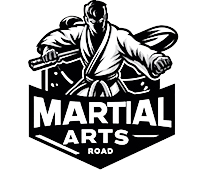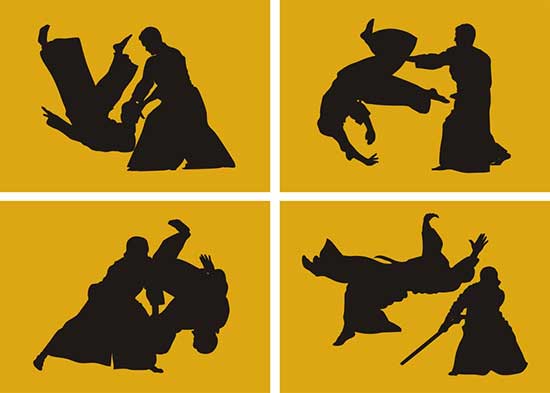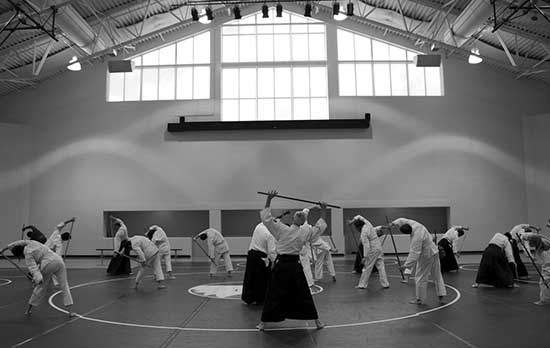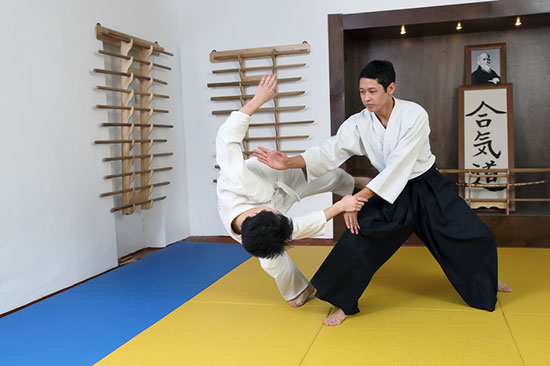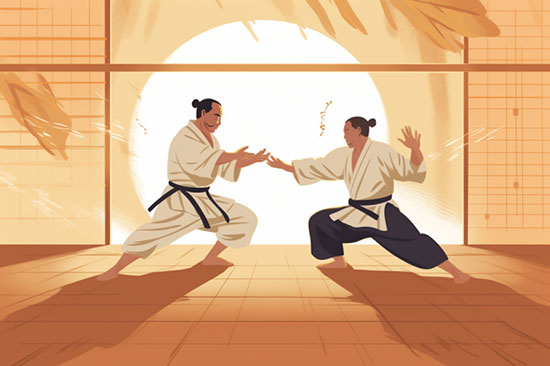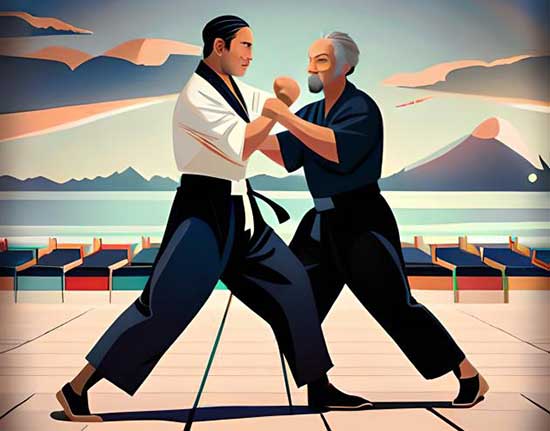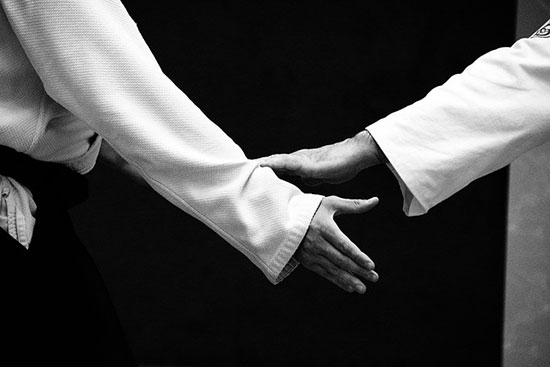Although Aikido techniques are not commonly seen in MMA, some fighters have incorporated elements of Aikido into their arsenal.
Some fighters have incorporated elements of Aikido into their arsenal. For example, wrist locks and joint manipulations, which are common in Aikido, can be adapted to work in an MMA context.
Additionally, the fluidity and circular movements of Aikido can enhance a fighter’s footwork and ability to evade strikes.
Contents
Integration
Possible applications
Incorporating Aikido techniques into MMA can offer unique advantages, such as improved footwork, better control over an opponent’s limbs, and a more diverse skillset.
By blending Aikido principles with other martial arts, fighters can potentially become more unpredictable and harder to counter.
Fighters incorporating Aikido
There have been a few MMA fighters who have trained in Aikido or integrated aspects of the martial art into their fighting style.
For example, former UFC fighter Karo Parisyan has a background in both Aikido and judo, while Bellator fighter Royce Gracie has been known to utilize wrist locks and other Aikido techniques in his grappling game.
Challenges
Adapting Aikido for MMA
One of the main challenges in integrating Aikido into MMA is adapting the techniques to fit the rules and competitive nature of the sport.
Aikido’s emphasis on blending with an opponent’s energy and redirecting attacks may not always be effective in the high-pressure environment of an MMA fight, where aggression and the ability to absorb and deliver damage are crucial.
Overcoming criticism
Another challenge is overcoming the perception that Aikido is not suitable for MMA due to its non-aggressive nature. Many critics argue that Aikido’s techniques are not practical or effective in a real combat situation. However, by incorporating Aikido principles and techniques alongside other martial arts, fighters can potentially create a unique and versatile fighting style.
Potential
Aikido’s unique contribution to MMA
Despite its challenges, Aikido has the potential to contribute to MMA by offering a unique perspective on movement, defense, and energy manipulation.
By incorporating Aikido techniques, MMA fighters can develop a more well-rounded skillset and become more adaptable in the cage.
Promoting Aikido within MMA
In order to promote Aikido within MMA, it is essential for practitioners to demonstrate the effectiveness of martial art in real-life combat situations.
This may require a shift in the way Aikido is taught and practiced, with a focus on adapting techniques for use in a competitive setting.
Training
Cross-training benefits
MMA fighters can benefit from cross-training in Aikido, as it can help them develop a deeper understanding of body mechanics, balance, and movement.
This can lead to improved footwork, better control in clinch situations, and more effective grappling exchanges.
Tips for incorporating Aikido in MMA training
To incorporate Aikido in MMA training, fighters should focus on learning the principles and techniques that can be adapted to work within the rules and constraints of MMA.
This may include wrist locks, joint manipulations, and circular footwork. Additionally, sparring with Aikido practitioners can help MMA fighters develop a better understanding of martial art and how to integrate it into their fighting style.
Conclusion
While Aikido is not commonly used in MMA, it has the potential to provide unique benefits and contribute to a fighter’s overall skillset.
By adapting Aikido techniques and principles to the competitive environment of MMA, fighters can create a versatile and well-rounded fighting style.
Despite the challenges and criticisms, Aikido’s unique approach to movement and energy manipulation can offer valuable insights and advantages in the world of mixed martial arts.
